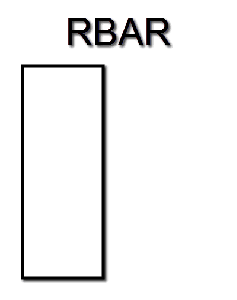Many years ago Jeff Moden (of SQL Server Central fame) came up with the concept of RBAR. Row-By-Agonizing-Row. At it’s most basic it means you are inserting one row at a time. A more broad interpretation says it’s any type of loop even the type caused by a recursive CTE.
And the point? Loops are slower than batches.
Simple example:
Batch
USE AdventureWorks2014; GO SELECT TOP 0 * INTO vSWA FROM Sales.vStoreWithAddresses; GO DECLARE @StartTime datetime = getdate() INSERT INTO vSWA SELECT * FROM Sales.vStoreWithAddresses; SELECT DATEDIFF(millisecond,@StartTime,getdate()) GO DROP TABLE vSWA; GO -- 23 milliseconds
RBAR
USE AdventureWorks2014; GO SELECT TOP 0 * INTO vSWA FROM Sales.vStoreWithAddresses; GO DECLARE curSWA CURSOR KEYSET FOR SELECT * FROM Sales.vStoreWithAddresses; DECLARE @BusinessEntityID int ,@Name Name ,@AddressType Name ,@AddressLine1 nvarchar(60) ,@AddressLine2 nvarchar(60) ,@City nvarchar(30) ,@StateProvinceName Name ,@PostalCode nvarchar(15) ,@CountryRegionName Name; OPEN curSWA DECLARE @StartTime datetime = getdate(); FETCH NEXT FROM curSWA INTO @BusinessEntityID, @Name, @AddressType, @AddressLine1, @AddressLine2, @City, @StateProvinceName, @PostalCode, @CountryRegionName; WHILE (@@fetch_status <> -1) BEGIN IF (@@fetch_status <> -2) BEGIN INSERT INTO vSWA (BusinessEntityID, Name, AddressType, AddressLine1, AddressLine2, City, StateProvinceName, PostalCode, CountryRegionName) VALUES (@BusinessEntityID, @Name, @AddressType, @AddressLine1, @AddressLine2, @City, @StateProvinceName, @PostalCode, @CountryRegionName) END FETCH NEXT FROM curSWA INTO @BusinessEntityID, @Name, @AddressType, @AddressLine1, @AddressLine2, @City, @StateProvinceName, @PostalCode, @CountryRegionName; END SELECT DATEDIFF(millisecond,@StartTime,getdate()); CLOSE curSWA; DEALLOCATE curSWA; GO DROP TABLE vSWA; GO --850
So 23 milliseconds for the batch version and 850 milliseconds for RBAR. What a difference.
Now in this case the code for the RBAR is also a lot more complicated. But that isn’t always the case. It also isn’t always the case that RBAR is slower. But it’s almost always a lot slower than batch.
So, while the code for RBAR is often easier to write, even though it might be physically longer, it’s probably going to be slower too.
Edit: On twitter today I had it pointed out to me that my cursor may not be the fastest it could be. And in specific I was shown this post by Aaron Bertrand (b/t) that says a FAST_FORWARD cursor might very well be faster than what I had. (It didn’t test against KEYSET but even so.)
So in the interest of fairness to cursors (and honestly I don’t object to them when you actually need them) I ran some additional tests. The following are average times (I ran each test 10 times):
Batch: 48.7ms
KEYSET Cursor: 558.6ms
FAST_FORWARD Cursor: 595.4ms
So batch is still considerably faster (by 10+x) and KEYSET was actually faster (marginally) than FAST_FORWARD. At least in my test.
Filed under: Microsoft SQL Server, Performance, SQLServerPedia Syndication, T-SQL Tagged: microsoft sql server, Performance, T-SQL
![]()




